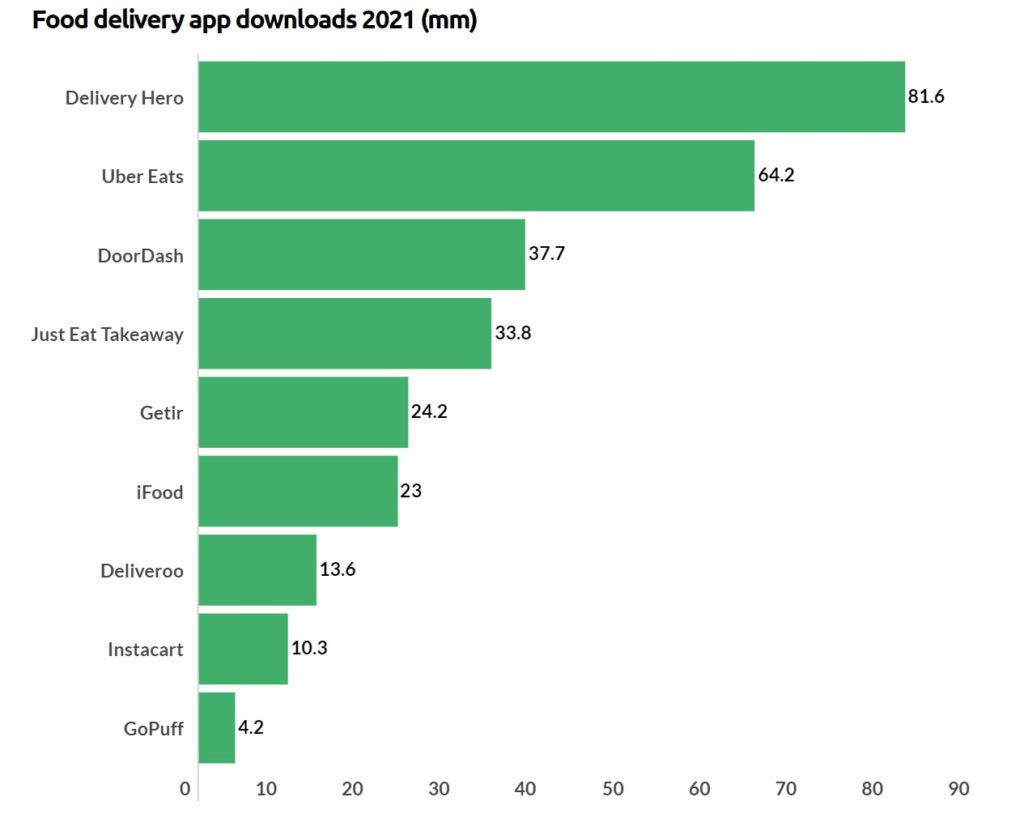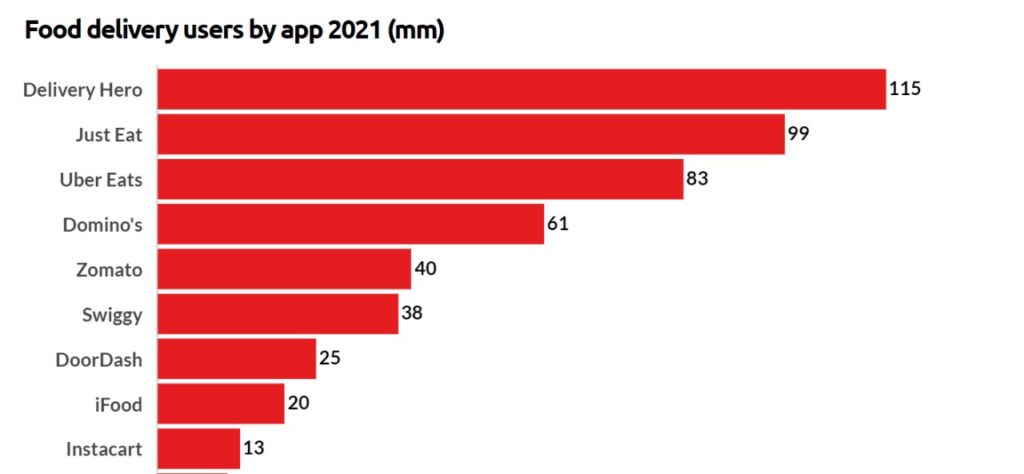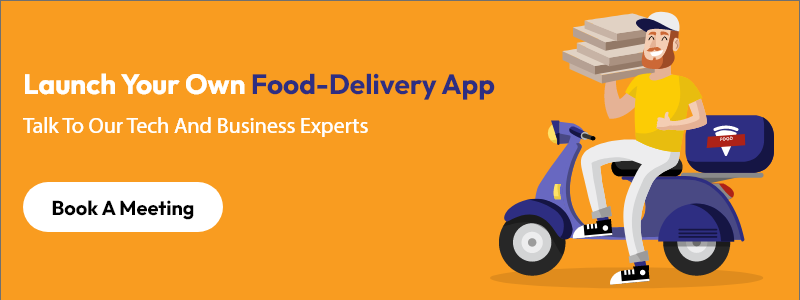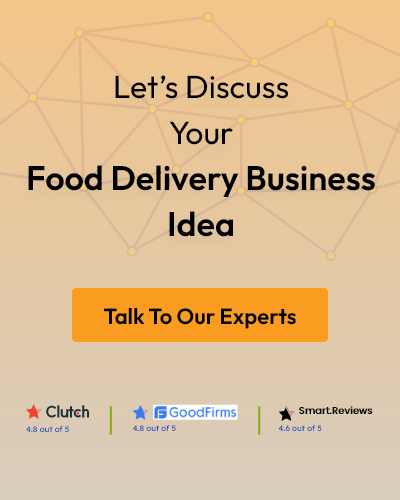Evolution in technology has altered the outlook and facets of many businesses world over.
Integration of technology in any domain spells success for businesses that stick their hands out. The food industry irrefutably aces key sectors having developed swift changes due to the adoption of technology.
Food delivery apps in Sweden have been experiencing unprecedented growth that has been revolutionised through online order management and delivery.
Smartphone applications have minimized cost and mitigated the strenuous in-house dining process thereby ushering in minimal physical contact. This is basically due to the introduction of innovative online ordering apps in the system that has successfully helped establish ghost kitchens.

Food delivery apps in Sweden have caught the imagination of people and several of them have been providing services for years now. The pandemic only enhanced the embracing of these apps as we humans seek convenience perennially.
The worldwide lockdown caused takeout food services to become increasingly popular, especially with those espoused at home. The development that restaurant technology brought in was a shift from decades of dine-in practices to receiving deliveries in the comfort and safety of familiar surroundings.

Introduction: Food Delivery Apps In Sweden
There has been turbulent years in the delivery sector for takeaways in Europe. As a result of lockdowns, physical distancing and other restrictions, food-delivery startups such as UberEats, Just Eat, Glovo, Deliveroo, and others were able to maintain profitability. But the question is – soon the pandemic will be truncated and old habits will return.
Will the food delivery apps be able to perform to the expectations of customers and business to make a sustainable future?
Apps facilitate proper order management using real-time analytics and other insights. This not only streamlined ghost kitchen delivery systems but even increased profitability. There are several food delivery apps in Sweden that we discuss below.
Deliveroo
This exceptional delivery app was launched in 2013 in London, UK by Will Shu. It conducts operations in over 200 cities and has more than 80,000 restaurants that are affiliated to them. The app provides several dietary options, with classifications such as Sushi, Pizza, Sandwiches, Bagels, desserts, and more. You can access services either through the website or the app.
Deliveroo operates in Australia, Kuwait and the United Arab Emirates, while it expanded operations into Western Europe and Hong Kong. Deliveroo is placed either second or third and in many regions while Uber Eats and Just Eat Takeaway lead the competition.
There are 7.4 million Deliveroo users, most are in the U.K placing them among the top food delivery apps in Sweden. In 2022 Deliveroo generated $2.4 million revenue, an 8.2% YoY increase. Deliveroo also managed to reduce its net loss in 2022 from $379 million in 2021 to $312 million in 2022.
There has been 10+ Million downloads for Deliveroo via the Google play store and 5 Million iOS downloads. Entrepreneurs can source an app like Deliveroo spending anywhere between $10,000-25,000.
Just Eat

This London-based food delivery service began operating in 2001 and gained popularity throughout Europe placing them among the top food delivery apps in Sweden. There are multiple categories of food available on Just Eat that you can order a takeout and savor the food at home. It doesn’t matter if you are into Italian, Lebanese, Chinese, Indian, or if you are looking for options such as burger, pizza, chicken dishes, or more, you will find all these easily in the app.
Their app with ghost kitchen service commands presence in 14 European countries and has recently kicked-off operations in South America too. Main features available on the app are: an admin panel, restaurant app, delivery app, and customer app.
Just Eat has managed to get 10 million downloads on Google play store and 7 million downloads via Apple store. To develop an app similar to Just Eat will cost you around $15,000 to $20,000. This largely also depends on the features required, the location of the app development company and its expertise.
UberEats

UberEats transformed online ordering since its inception in 2014, revolutionising restaurant delivery technology. The parent company began with cab operations and then dished out food delivery as well, and soon they began to be ranked among the most preferred in Europe. The app has a robust global presence providing services in over 1,000 cities worldwide.
Uber Eats (like other food delivery services) are hoping to reduce costs using “dark kitchens”, set up by restaurants in cheaper locations and focusing only on delivery. Uber announced it would not be providing real-estate for these kitchens, but now many chain restaurants have imbibed this strategy.
In 2020, Uber Eats became cash cow for Uber as their ride hailing platform suffered 50% lower revenue compared to the previous year. Until Q2 2020 Uber Eats has generated more revenue than the Mobility segment, but Uber expects the trend to reverse.
UberEats recorded at least 100 million downloads on Google play store has 50 million loyal users.
Glovo

Glovo was launched in Barcelona in the year 2015, with food delivery as its primal service. In 2020 Glovo was the second highest installed food delivery app across Europe, accounting for over 1.2 million installs in a month.
This marked Glovo as an important partaker in the food tech delivery sector in Europe. The app enjoys an enviable dominance in Europe and allows you to track your food in real-time.
GrubHub

This US based online food tech and delivery platform was founded in 2004. It connects you with local eateries for takeout food services. In Europe, GrubHub has earned a name for itself due to exemplary services. It provides food delivery via ghost kitchens and an efficient order management system.
The online ordering app offers a delectable menu for subscribers to order their most preferred dish and have it delivered to a location of their preferred choice.
GrubHub was acquired by Just Eat Takeaway in a multi-billion dollar acquisition deal. Now therefore this combination makes it one of the biggest online food delivery service provider in Europe.
Delivery Club
Founded in 2009, Delivery Club, a food delivery company was incepted in Russia and then began operating in about 75 cities with more than 4,000 restaurants under its belt. Their mobile app has garnered over 5 million downloads. The app provides lots of incentives, upon installation of the application. You receive 1,000 points in your wallet for registration that can be redeemed in subsequent orders.
This online food delivery apps in Sweden has a quick, easy and convenient delivery process for takeout food across Europe. The app is reputed as one of the biggest in Sweden and has an efficient order management system.
Conclusion: Food Delivery Apps In Sweden
The penetration of smartphones has made the world smaller and people now believe they can carry out any chore within a few clicks. Mobile apps have their presence in most domains, from booking flight tickets to hailing cabs, ordering food to sending money.
The food delivery market made headline since people are keen on enjoying a scrumptious meal within the confines of their homes rather making time and taking effort to travel to far off places or visiting restaurants.
A Food-delivery app is a pivotal moment in the restaurant industry providing further options to choose from for increased flexibility to a world where providing convenience to a customer is primal. Customer service has been built directly into the app.

Ordering and takeout are not new concepts, but delivery apps have changed the manner which the restaurant industry operates. Customers are folks who seek convenience and are ready to pay extra for the comfort that is offered instead.
The millennials’ eating habits is changing the façade of the food delivery industry and bringing on a major transformation. As millennials change their eating habits, how food moves also gathers transformation.
Such large number of reasons power the food delivery industry to concentrate more on last-mile deliveries that need to be quick.
This is reflected in the phenomenal use of technology and higher investment levels worldwide causing the success of third-party food delivery solutions that better busy lifestyle trends. Habits of millennials’ have influenced this sector majorly as they make up a large portion of users.
After an Engineering degree and a Diploma in Management I devoted 16+ years working in the automotive industry. My innate skill and extreme passion in writing, encouraged me to adopt it up as a profession. I have been writing for more than 10+ years in the software industry. The 400+ blogs I published are informative, exhaustive and interesting to a professional and causal reader.










